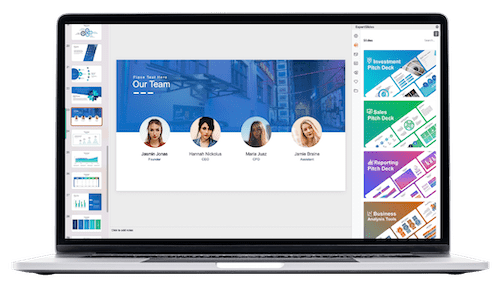How to Conclude a Presentation – Tips and Tricks
Table of Contents
When concluding a presentation, it is essential to recap the primary points discussed throughout the talk. This summary serves as a reminder to the audience of the main takeaways, reinforcing the most critical information and ensuring it remains in their minds. To achieve this, briefly revisit the main ideas, highlight key facts and figures, and emphasize the core messages you want the audience to retain.
This concise overview facilitates the audience’s understanding and retention of the shared information. In addition to summarizing key points, it is crucial to link them back to the main message. This reinforces the overall theme or purpose of the presentation, ensuring the audience grasps the significance of the shared information.
By connecting each key point to the main message, you provide a clear and cohesive conclusion, leaving the audience with a solid understanding of the primary ideas discussed. This can be accomplished by explaining how each key point contributes to the overall message and its importance within the context of the presentation. By summarizing key points and linking them back to the main message, you deliver a clear and effective conclusion that leaves a lasting impression on the audience.
Key Takeaways
- Summarize your key points to reinforce the main ideas of your presentation
- End with a strong call to action to prompt your audience to take the next steps
- Use a memorable closing statement to leave a lasting impression
- Engage your audience with a thought-provoking question to keep them thinking
- Provide next steps for further engagement to keep the conversation going after the presentation
End with a Strong Call to Action

Clearly Define the Call to Action
To effectively end with a strong call to action, clearly state what you want your audience to do as a result of your presentation. Provide them with specific steps they can take and explain the potential impact of their actions. This empowers your audience to make a change and shows them how they can put the information you’ve shared into practice.
Emphasize the Benefits of Taking Action
In addition to providing a strong call to action, it’s essential to emphasize the benefits of taking action. This motivates your audience by showing them how they can personally benefit from following through on your call to action. Highlight the positive outcomes that can result from taking action, such as personal growth, professional success, or making a positive impact on the world.
Provide a Compelling Reason to Act
By ending with a strong call to action and emphasizing the benefits of taking action, you’re providing your audience with a clear and compelling reason to act on the information you’ve shared. This makes it more likely that they will follow through on your call to action, ultimately leading to a greater impact from your presentation.
Use a Memorable Closing Statement
When concluding a presentation, it is important to leave a lasting impression on your audience. One effective way to do this is by using a memorable closing statement that encapsulates the main message of your presentation and leaves a strong impact on your audience. This can be a powerful quote, a thought-provoking question, or a compelling statement that summarizes the key ideas that you have discussed.
By using a memorable closing statement, you are providing your audience with a final takeaway that will stick in their minds long after your presentation has ended. This can be done by choosing a closing statement that is relevant to the main message of your presentation, resonates with your audience, and leaves them with something to think about. In addition to using a memorable closing statement, it is also important to consider the tone and delivery of your conclusion.
The way in which you deliver your closing statement can greatly impact how it is received by your audience. Whether it is delivered with passion, conviction, or emotion, the tone of your closing statement can leave a lasting impression on your audience and reinforce the main message of your presentation. By using a memorable closing statement and delivering it with impact, you are ensuring that your conclusion leaves a strong impression on your audience and reinforces the key ideas that you have discussed throughout your presentation.
Engage Your Audience with a Question
| Tip | Description |
|---|---|
| Summarize Key Points | Recap the main ideas and takeaways from your presentation. |
| Call to Action | Encourage the audience to take a specific action based on your presentation. |
| Ask Questions | Engage the audience by asking thought-provoking questions. |
| Closing Statement | End with a memorable and impactful statement that reinforces your message. |
| Thank the Audience | Show appreciation for their time and attention. |
Another effective way to conclude a presentation is by engaging your audience with a thought-provoking question. This can be a powerful way to encourage reflection and stimulate discussion among your audience members. By asking a question that is relevant to the main message of your presentation, you are prompting your audience to consider how the information that you have shared applies to their own lives and experiences.
This can be done by asking an open-ended question that encourages critical thinking, prompts self-reflection, or challenges conventional wisdom. By engaging your audience with a question, you are encouraging them to actively participate in the conclusion of your presentation and leaving them with something to ponder long after your talk has ended. In addition to engaging your audience with a question, it is also important to create an opportunity for discussion and interaction.
This can be done by inviting members of your audience to share their thoughts and perspectives in response to the question that you have posed. By creating an open dialogue, you are fostering engagement and allowing your audience members to contribute their own insights and experiences to the conclusion of your presentation. This can lead to meaningful discussions, new perspectives, and deeper connections with your audience members.
By engaging your audience with a thought-provoking question and creating an opportunity for discussion, you are ensuring that your conclusion is interactive and impactful, leaving a lasting impression on your audience.
Provide Next Steps for Further Engagement

When concluding a presentation, it is important to provide next steps for further engagement with your audience. This can be a valuable opportunity to continue the conversation beyond the confines of your presentation and maintain ongoing connections with your audience members. Whether it is inviting them to connect with you on social media, sign up for a newsletter, attend an upcoming event, or participate in a follow-up discussion, providing next steps for further engagement can help to keep the momentum going after your presentation has ended.
This can be done by clearly outlining how your audience members can stay connected with you, providing them with specific actions that they can take, and explaining the benefits of further engagement. By providing next steps for further engagement, you are creating opportunities for continued interaction and ensuring that the impact of your presentation extends beyond the time that you spent speaking. In addition to providing next steps for further engagement, it is also important to make yourself accessible to your audience members.
This can be done by offering opportunities for one-on-one conversations, answering questions, or providing additional resources that can help them further explore the topics that you have discussed in your presentation. By making yourself accessible, you are showing your audience members that you are committed to their ongoing engagement and providing them with the support that they need to continue their learning journey. This can lead to deeper connections, increased trust, and ongoing relationships with your audience members.
By providing next steps for further engagement and making yourself accessible, you are ensuring that the impact of your presentation extends beyond the time that you spent speaking and creating opportunities for continued interaction with your audience.
Reiterate Your Main Message
In addition to summarizing your key points and tying them back to your main message, it is also important to reiterate your main message in the conclusion of your presentation. This can help to reinforce the central theme or purpose of your talk and ensure that it sticks in the minds of your audience members. By reiterating your main message, you are reminding your audience of the most important takeaway from your presentation and emphasizing its significance in the context of their lives or work.
This can be done by restating the main message in clear and compelling language, highlighting its relevance and importance, and explaining why it matters. By reiterating your main message, you are providing a strong conclusion to your presentation that leaves a lasting impression on your audience. In addition to reiterating your main message, it is also important to consider how you can make it memorable for your audience members.
This can be done by using storytelling, visual aids, or other creative techniques that help bring your main message to life and make it more impactful for your audience. By making your main message memorable, you are ensuring that it resonates with your audience members long after your presentation has ended and leaves a lasting impression on their minds. This can lead to greater retention of the information that you have shared and increased likelihood that they will take action based on what they have learned from your presentation.
By reiterating your main message and making it memorable for your audience members, you are providing an effective conclusion to your presentation that reinforces the most important takeaway from your talk.
Leave a Lasting Impression
When concluding a presentation, it is important to leave a lasting impression on your audience. This can be achieved by using a combination of techniques such as summarizing key points, ending with a strong call to action, using a memorable closing statement, engaging with a question, providing next steps for further engagement, reiterating the main message, and making yourself accessible. By incorporating these strategies into the conclusion of your presentation, you are ensuring that it has a lasting impact on your audience members and leaves them with something meaningful to take away from their experience.
In addition to leaving a lasting impression through these techniques, it is also important to consider how you can make an emotional connection with your audience members. This can be achieved by sharing personal stories or experiences that resonate with them on an emotional level and make them feel connected to the message that you have shared in your presentation. By making an emotional connection with your audience members, you are creating an experience that they will remember long after they have left the room and increasing the likelihood that they will take action based on what they have learned from their time spent listening to you speak.
In conclusion, there are many effective ways to conclude a presentation in order to leave a lasting impression on your audience members. By summarizing key points, ending with a strong call to action, using a memorable closing statement, engaging with a question, providing next steps for further engagement, reiterating the main message, making yourself accessible, and making an emotional connection with your audience members, you can ensure that the impact of your presentation extends beyond the time that you spent speaking and creates opportunities for continued interaction with those who have listened to what you had to say. By incorporating these strategies into the conclusion of your presentation, you are providing an effective conclusion that reinforces the most important takeaway from what you have shared and leaves a lasting impression on those who have been in attendance.
FAQs
What is the purpose of a conclusion in a presentation?
The purpose of a conclusion in a presentation is to summarize the main points, leave a lasting impression on the audience, and provide a sense of closure to the presentation.
What are some tips for concluding a presentation effectively?
Some tips for concluding a presentation effectively include summarizing key points, ending with a strong closing statement, engaging the audience with a call to action or a thought-provoking question, and expressing gratitude to the audience for their time and attention.
How can body language and tone of voice impact the conclusion of a presentation?
Body language and tone of voice can impact the conclusion of a presentation by conveying confidence, enthusiasm, and sincerity. Maintaining eye contact, using open gestures, and speaking with a clear and confident tone can help leave a positive impression on the audience.
Should a conclusion of a presentation introduce new information?
No, the conclusion of a presentation should not introduce new information. It should only summarize the main points and provide a sense of closure to the presentation.
What are some common mistakes to avoid when concluding a presentation?
Some common mistakes to avoid when concluding a presentation include rushing through the conclusion, ending abruptly without a clear closing statement, introducing new information, and failing to express gratitude to the audience.
Get 15+ Mio. PowerPoint Assets - FREE SIGN-UP

Sign up for free to our PowerPoint extension, ExpertSlides. Everything you need, directly in PowerPoint. No credit card required.
Related Posts
Recent Posts
Main Menu
Knowledge base
Useful Links






